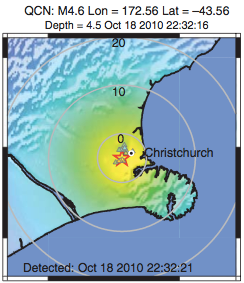| Home |
| Research |
| Downloads |
| Publications |
| Teaching |
| People |
| Press |
| Allen CV |
| Seismo Lab |
| Earth & Planetary |
| UC Berkeley |
|
Rapid Earthquake Characterization Using MEMS Accelerometers and Volunteer Hosts Following the M 7.2 Darfield,
New Zealand, Earthquake
|
|
Jesse F. Lawrence, Elizabeth S. Cochran, Angela Chung, Anna Kaiser, Carl M. Christensen, Richard Allen, Jack W. Baker, Bill Fry, Thomas Heaton, Deborah Kilb, Monica D. Kohler, and Michela Taufer
Bull. Seismo. Soc. Am. , 104, 184-192 doi: 10.1785/0120120196, 2014.
|
|
Abstract |
|

